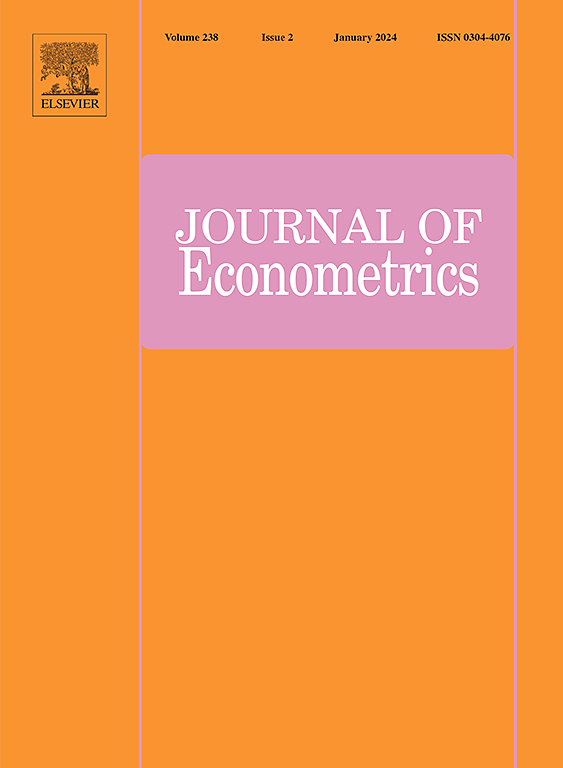High frequency factor analysis with partially observable factors
IF 4
3区 经济学
Q1 ECONOMICS
引用次数: 0
Abstract
This paper considers a novel factor structure – Partially Observable Factor Model – where both observable factors and latent factors exist in the model simultaneously. Such factor structure can make sure both interpretability and goodness-of-fit at the same time. Necessary estimation methodologies for this partially observable factor model are developed in this paper for the high frequency data. The proposed estimation methodology is robust to jumps, microstructure noise and asynchronous observation times simultaneously.
When the observable factors are exogenous, we provide the estimation theory for the integrated eigenvalues of the residual covariance matrix, which including the bias-corrected estimator, central limit theorem and asymptotic variance estimator. As a result, the asymptotic normality of the bias-corrected estimator can be applied to test the existence of the latent factors.
When the observable factors are endogenous, we propose a novel framework of high frequency unsupervised exogenous component learning (HF-UECL), which can help people quantify the contributions of the observable factors into the latent factors. This is the first work on high frequency instrumental variables, and it can be regard as a necessary and non-trivial extension of the Projected-PCA in the world of continuous-time model. Statistical inferences have been established for the loadings of the observable factors onto the latent factors.
Monte Carlo simulation demonstrates the validity of our estimation methodologies. Empirical study demonstrates that (i) in the exogenous setting, the latent factors significantly exist in the residual process of the high frequency regression; (ii) in the endogenous setting, the correlations between the observable factors and latent factors do exist significantly.
部分可观察因子的高频因子分析
本文提出了一种新的因子结构——部分可观察因子模型,该模型中可观察因子和潜在因子同时存在。这种因子结构可以同时保证可解释性和拟合优度。本文对高频数据的部分可观测因子模型提出了必要的估计方法。所提出的估计方法同时对跳变、微观结构噪声和异步观测次数具有鲁棒性。当观测因子为外生时,给出了残差协方差矩阵积分特征值的估计理论,包括偏校正估计量、中心极限定理和渐近方差估计量。因此,偏差校正估计量的渐近正态性可以用来检验潜在因素的存在性。当可观察因素为内生因素时,我们提出了一种新的高频无监督外生成分学习框架(HF-UECL),它可以帮助人们量化可观察因素对潜在因素的贡献。这是对高频工具变量的首次研究,可以看作是投影pca在连续时间模型领域的必要而重要的扩展。对于可观察因素对潜在因素的负荷,已经建立了统计推断。蒙特卡罗仿真证明了我们的估计方法的有效性。实证研究表明:(1)在外生背景下,高频回归的残差过程中潜在因素显著存在;(ii)在内生环境下,可观察因素与潜在因素之间确实存在显著的相关性。
本文章由计算机程序翻译,如有差异,请以英文原文为准。
求助全文
约1分钟内获得全文
求助全文
来源期刊

Journal of Econometrics
社会科学-数学跨学科应用
CiteScore
8.60
自引率
1.60%
发文量
220
审稿时长
3-8 weeks
期刊介绍:
The Journal of Econometrics serves as an outlet for important, high quality, new research in both theoretical and applied econometrics. The scope of the Journal includes papers dealing with identification, estimation, testing, decision, and prediction issues encountered in economic research. Classical Bayesian statistics, and machine learning methods, are decidedly within the range of the Journal''s interests. The Annals of Econometrics is a supplement to the Journal of Econometrics.
 求助内容:
求助内容: 应助结果提醒方式:
应助结果提醒方式:


